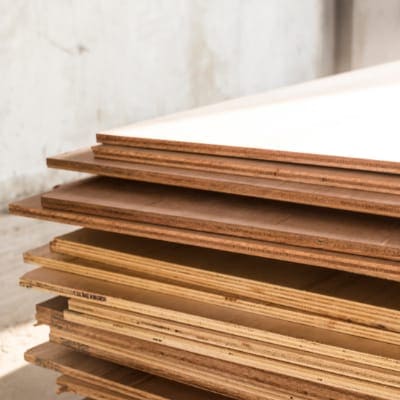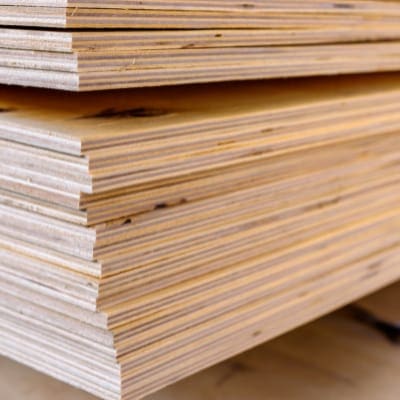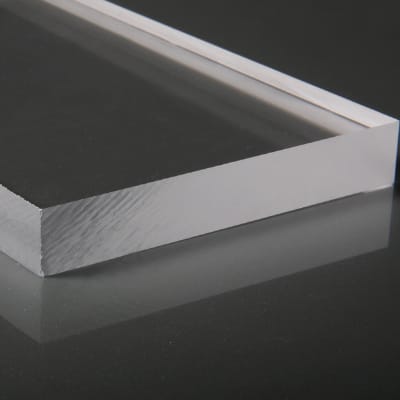A modular kitchen is built with designer modules, tailored to suit the interior. The high-quality modular kitchen materials and finishes make them durable and attractive. Since kitchen cabinets account for at least half of the skeletal structure of your kitchen, you should choose a material after making an in-depth analysis from the list of modular kitchen materials.
This article will provide you with thorough information about the best modular kitchen materials with their pros and cons so that you can make the best decision.

What is each module made of?
Each module is made with suitable materials and has a structure with a self-contained shutter that can be taken in and out separately. This aids in the repair of the kitchen as it ages.
The skeleton is supported by three-or-four-inch movable legs, with a total of four legs, one under each module. The base module includes plinth feet with skirting to conceal the legs. Since the stands are adjustable, they elevate the level of the kitchen carcass regardless of undulation in the floor.
The side and back panels are are glued in with hardwood dowels, and the crossbar connects the panels together, which forms the module’s body.
Types of Modular Kitchen Materials and finishes
1. Carcass Materials
Carcass materials are the structural components of a modular kitchen that provide the framework for modular kitchen accessories. The body also offers an opportunity to incorporate design features such as decorative patterned tiles or bespoke units. The structure can be built using different types of modular kitchen materials, including MDF, chipboard, etc.
2. Outer Finish Materials
As the name implies, Outer Finishes add a final polish to the modular kitchen material, making it smooth. Finishes give kitchen cabinets an attractive appearance while protecting the materials from extreme temperatures or other damages.
While laminate is the most common finish, modular kitchens are also available with acrylic, glass, or veneer finishes.
Modular Kitchen Carcass Material list
Wood

Wood is the most common material used for the construction of modular kitchen cabinets. It is a non-hazardous and natural resource, and it is made entirely of wood fibers and has no artificial infiltrations. Apart from being used as a modular kitchen material, it can also do the flooring of your kitchen.
Best for: Hardwood is the best material for modular kitchen cabinets as it resists scratching and denting and is available in a variety of colors, grains, and textures.
Pros
Cons
Plywood

It is engineered by attaching several thin wooden sheets together under high pressure to form a single sheet or board. Plywood has 18 different variants based on the type of wood used, such as Boiling Water Resistant Ply, Moisture Resistant Ply, Marine Ply, etc.
Best for: Among types of plywood, Boiling Water Resistant Ply is the best option both for modular and semi-modular kitchens due to its highly water-resistant property.
Pros
Cons
Medium-Density Fiberboard (MDF)

A Medium-Density Fiberboard, also known as engineered wood, is a single board made of a small wooden plank that is hot-pressed and glued together with resins. It is a synthetic modular kitchen material that provides a fantastic finish paired with the appropriate laminate.
Best for: MDF is ideal for cutting, machining, drilling and hence, is used for making cabinets and decorating purposes of modular kitchens.
Pros
Cons
Boiling Water Proof (BWP) plywood

Also known as Marine Plywood, BWP is water-resistant, making it an excellent material for the base of your modular kitchen (usually under the sink). It is a perfect choice of modular kitchen material for a wet area or at a place with a high risk of leakage.
Best for: Boiling Waterproof is an excellent material for making skeletons and shutters in a modular kitchen owing to its greater strength and water-resistant property.
Pros
Cons
Particle Board

Particle Board, also known as Chipboard or Low-Density Fibreboard, is made by pressing wood particles (sawdust and waste wood) together with epoxy resin with the help of glue at high temperature and pressure. Its surface is denser and more compact than the middle, with an average density of 650 kg/m³.
Best for: Particle Board is ideal for semi-modular and modular kitchens at a budget price.
Pros
Cons
High-Density High Moisture Resistant Board (HDHMR)

High-Density High Moisture Resistant Board is a heavy-duty, waterproof modular kitchen material manufactured by combining and pressing fiber chips and forest wood waste in a homogeneous construction process. Due to the pressing technique, small unusable particles are removed from the board, making it termite-free.
Best for: HDHMR is best for modular kitchens as it is highly water-resistant (can be used in extreme moisture areas) and enhances the kitchen space’s aesthetics.
Pros
Cons
PVC

Polyvinyl Chloride or PVC is one of the most economical types of modular kitchen materials made from the polymerization of vinyl chloride. There are two types of PVC boards – foam and hollow boards. While the former is sturdier, more reliable, and durable, the latter is lighter, cost-effective, and shinier.
Best for: Polyvinyl Chloride is best-suited for rented homes and small-term investment as it sags over time, and there is no resolution for damages.
Pros
Cons
Stainless Steel

Stainless steel is the newest material gaining popularity among homeowners in the pandemic world due to its antifungal and antimicrobial properties. The most common type of stainless steel used in modular kitchens is Type 304-Series, a more affordable version of Type 302-Series. These materials are corrosion-resistant, making them ideal for kitchens where acidic foods are cooked.
Best for: Stainless steel is suitable for any type of modular kitchen. It is highly durable, easy to clean, and offers a sleek, modern look that will complement any kitchen style.
Pros
Cons
List of finish Materials for modular kitchens
Laminate

Laminates are flimsy sheets sandwiched together with sections of plastic resin, paper, and a printed layer with numerous patterns or designs. Their finishes range from matt to embossed and glossy, and it is an easy way to add a modern touch to your modular kitchen.
Best for: A laminated kitchen finish is an ideal choice for Indian cooking. It is an affordable option for buyers looking for something simple yet attractive.
Pros
Cons
Acrylic

Made from polymethyl methacrylate, acrylic is a plastic that is highly resistant to scratches, stains, and heat. The highly reflective surface of acrylic gives the modular kitchen a sophisticated look, making it appear and feel larger. These are available in a wide range of vibrant colors and textures.
Best for: Acrylic finish is a popular choice for modular kitchens because it is easy to install and work with, is available in the form of sheets, and provides a sleek, high-tech look.
Pros
Cons
Membrane

Membrane finish is the Polyvinyl Chloride (PVC) used in modular kitchens because it imparts a high-end modern look. Made of plastic resins, the membrane finish is readily available in sheets. Unlike other modular kitchen materials, it is heat-sealed to the surface, making it impossible for water to seep between the sheet and the material.
Best for: Membrane finish is suitable for modular and semi-modular kitchens as it is moisture resistant which prevents the build-up of mold and mildew, is durable, resists stain and dirt, and provides a trendy look.
Pros
Cons
polyurethane (PU)

PU or polyurethane is a polymer produced from petroleum. It is both water and stain-resistant. PU finishes offer a unique look and feel that is modern and timeless. From sleek and sophisticated to rustic and traditional kitchen, a PU finish fits any kitchen interior design. PU finishes can also be used to update any outdated appliances or fixtures in your modular kitchen.
Best for: PU finish is an easy way to update and modernize your modular kitchen without tearing out your appliances or fixtures and provides a high gloss finish.
Pros
Cons
Glass

Glass adds a touch of luxury to your modular kitchen while also making it appear tidy. It is a clear finish with little or no color, which enhances the natural beauty of wood. It is also an excellent reflector of heat and light, making it a perfect choice for adjoining kitchens.
Best for: Glass finishes are best for those looking for an open and airy kitchen. It creates a more refined and sophisticated look to your modular kitchen and is cost-effective.
Pros
Cons
Veneer

Made from thin sheets of wood or plastic, the veneer finish provides a great way to update your kitchen without having to change the layout or design of your modular kitchen. It offers a unique look to your kitchen.
Best for: Veneer finishes are popular in modular kitchens due to their eye-catching appearance. Furthermore, the rich tone creates a sense of warmth and a homely atmosphere which complements the surroundings.
Pros
Cons
Modular kitchen materials and finishes – the verdict
Modular kitchen materials and finishes give you the flexibility to create the kitchen of your dreams. You can make a kitchen that fits your lifestyle and your budget, with a range of styles, colors, and designs to choose from. Since modular kitchens are customizable, you can change the layout and design of your kitchen to suit your needs and your family’s needs.
This article explores the list of modular kitchen materials and finishes available to homeowners. You might have already gained some design ideas for how homeowners can use these modular kitchen materials to create the kitchens of their dreams.
Related Posts:
